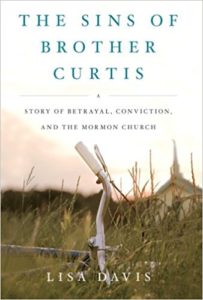For the LDS Church to change its policies regarding sex abuse, it must first admit there is a systemic problem in the institutional organization. Since some victims are silenced with non-disclosure agreements and others are afraid to speak up because they fear retribution from their perpetrators or from the Church, we will never know the extent of the abuse. However, physicians and therapists in heavily Mormon populated areas state that a number of their patients or clients are victims of ecclesiastical sexual or physical abuse.
The following is a brief list of a few LDS bishops and leaders who have been convicted of sexually abusing members. Since only one-third of those who are sexually abused report abuse to police and only 6 out of 1000 are convicted, there are many LDS leaders who do not have a criminal record but who abuse members or spouses without being held accountable.
♦“In September 2008, LDS Church BishopTimothy McCleve pleaded guilty to sexually molesting children from his ward. He was sentenced in December 2008 to one-to-15 year prison terms for the abuse.
♦“In March 2010, former LDS Church bishop Lon Kennard, Sr. was charged with 43 felony counts of sex abuse and sexual exploitation of children, and was imprisoned in Wasatch County, Utah”. In November 2011, Kennard was sentenced to three terms of five-years-to-life in prison to be served consecutively, after pleading guilty to three first-degree felony counts of aggravated sex abuse of a child for sexually abusing his daughters.
♦“In December 2013, LDS Church bishop Todd Michael Edwards was sentenced to three years in prison for molesting two teenage girls who attended his congregation in Menifee, California”. Edwards received two concurrent sentences of three years in prison for two felony counts of sexual battery and sexual penetration with a foreign object. A felony charge of witness intimidation was dismissed as part of a plea bargain with prosecutors after Edwards pleaded guilty.
♦“On August 15, 2017, MormonLeaks published a three-hundred and sixteen-page document which contained confirmed and alleged instances of child sexual abuse between 1959 and 2017.
♦“On October 30, 2017, an Australian court sentenced Darran Scott to 10 years in prison for sexually abusing boys, some of whom he met as a Mormon leader.”[1]
Many more accounts of LDS abuse regarding LDS members, including women and children have been compiled. Most victims suffer in silence because they have been ignored by Church leaders, been threatened by excommunication for disclosing their abuse, or have signed non-disclosure agreements after reporting abuse.
When members are required to obey and sustain their bishops and are told that each of one of them is called by the Lord under revelation, they become easy targets of perpetrators and are often disbelieved or blamed if they report abuse, especially is an ecclesiastical leader is a perpetrator. Some bishops were violent and malevolent offenders before they were called. Although many are kind and caring individuals, it is unhelpful and even dangerous to suggest that all of them are called of God. Surely, God would not call a rapist, child molester, thief, or murderer, and yet many have been convicted of these crimes and more.
Until LDS Church leaders acknowledge that there is a problem regarding ecclesiastical sexual abuse in the Church, they will not take measures to solve it. Current LDS Church policies continue to silence victims and empower perpetrators. This is unacceptable. The Church must enact effectual policies and programs that protect members and not perpetrators. Until that happens, we will continue to see an epidemic of abuse that is not only permitted but encouraged by the practices that it employs.
But whoso shall offend one of these little ones which believe in me, it were better for him that a millstone were hanged about his neck, and that he were drowned in the depth of the sea.—Matthew 18:6
1.See https://en.wikipedia.org/wiki/Mormon_abuse_cases.
RESOURCES:
Joe E. Trull & James E. Carter, Ministerial Ethics: Being a Good Minister In A Not-So-Good World (Nashville: Broadman & Holman, 1993), 81.
Dr. Kris Helge and Bradley T. B. Toben, “Sexual Misconduct of Clergypersons with Congregants or Parishioners,” Clergy Sexual Misconduct and Prevention, Baylor University.
“Grooming Dynamic,” National Center for Prevention of Crime. http://victimsofcrime.org/media/reporting-on-child-sexual-abuse/grooming-dynamic-of-csa
Rosemary Webb and Jennifer Mitchell, “A Profile of a Child Molester,” Child Lures Prevention, 2018. https://childluresprevention.com/resources/molester-profile/
Tim Challis, “Six Reasons Why Sexual Predators Target Churches,” 9 March 2015. https://www.challies.com/articles/6-reasons-why-sexual-predators-target-churches/

